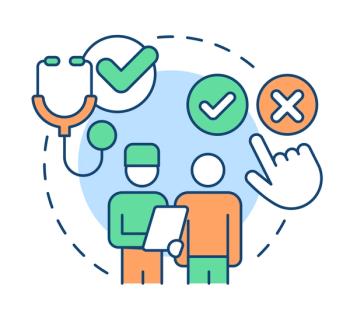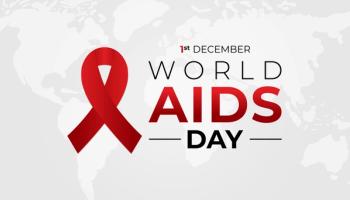
- MHE May 2022
- Volume 32
- Issue 5
Heading Upstream to the Social Determinants of Health
There’s a long history to recognizing that social factors shape people’s health. But the social determinants of health are getting more attention than ever. Will that attention turn into action and lasting change?
How is this for a medical scenario? Through her stethoscope, a doctor hears a rattle in Mr. Rodriguez’s chest. “Urban-air congestion!” she declares, flinging the window open and aiming a magic spray at the polluted outdoors. “Two spritzes each morning for a week,” she says, handing her patient the bottle, “and you — and the neighborhood — should be fine.” Ms. Jackson has diabetes of the lives-too-far-from-veggies variety; her doctor gives her a wand she can wave to instantly transform her paved yard into a luxuriant garden with tomatoes, basil, beets and Brussels sprouts. Then there’s Mr. Diefenbaker, whose home is on a remote dirt road. His chronic conditions are worsening because he has trouble coming in for office visits — he can’t afford a car, there’s no bus line nearby and the neighbor who gives him rides is undependable. “Stat!” the doctor calls to her assistant, who pecks notes on a digital tablet. “Get a new light-rail transit system going past Mr. Diefenbaker’s house!”
These are fantasies, of course. We don’t live in such a magical healthcare world, but we do enjoy the next best thing: the widespread understanding that the origins of health or illness extend way beyond the proximal effect of a clogged artery, swollen tissue or genetically damaged cancerous cells. In healthcare there is agreement that our health status reflects not just what our bodies and brains are doing but also how the social determinants of health (SDOH) have affected it.
The government gets it. The rather lumpy definition of SDOH by HHS is “the conditions in the environments where people are born, live, learn, work, play, worship and age that affect a wide range of health, functioning and quality-of-life outcomes and risks.” But we’ve been hearing about SDOH for some years now, and it’s fair to ask: How much good has understanding and acknowledging the concept actually done?
There’s no doubt that SDOH have become prominent in healthcare policies and discourse. “In the past decade,” says Laura Gottlieb, M.D., M.P.H., a professor of family and community medicine at the University of California, San Francisco, “things have moved from people understanding the impact of social determinants to an acceptance that there’s a role for delivery systems and payers to do something about them to improve equity in
health outcomes.”
Margaret Murray, a member of the Managed Healthcare Executive® editorial advisory board and CEO of the Association for Community Affiliated Plans (ACAP), a trade association representing
78 nonprofit health plans, says her group was studying SDOH “before it was cool.” SDOH are “baked into the DNA” of its members, health plans that were started by federally qualified community health centers, local governments and children’s hospitals, she says. She points to member-plan initiatives such as a job-support program at CareSource in Ohio and “food as medicine” campaigns aimed at food-insecure areas by CareOregon and Geisinger Health of Pennsylvania. In many cases, Murray says, plans are paying for these efforts themselves. Because such an approach isn’t sustainable in the long run, ACAP has proposed an SDOH rebate add-on, which, as Murray explains, “would be a way of giving plans some extra money to help with the social determinants of their beneficiaries who are enrolled in D-SNPs” — that is, dual-eligible special-needs plans for people entitled to both Medicare and Medicaid.
An old idea’s new clout
Recognition that circumstance impinges on biology does not belong solely to the 21st century. The ancient Romans noticed that there were higher death rates near marshes and swamps. Rudolf Virchow, a 19th- century German physician, writer and politician, is renowned for his theory of cellular pathology, which helped lay the foundation for modern medicine. But he’s also considered the founder of social medicine, famous for insisting that “medicine is a social science, and politics is nothing else but medicine on a large scale.”
Fast-forward to 20th-century Britain, where Thomas McKeown was named a professor of social medicine at the University of Birmingham in 1945. He studied Western societies’ increases in life expectancy, and in the 1970s he argued that these were due less to medicine’s advances than to economic growth and the improved nutrition it brought. Critics complained that McKeown slighted the role of public health policies such as those aimed at cleaning up drinking water and ending bovine tuberculosis, but the spotlight he’d shone on social factors remained bright.
Then there is Sir Michael Marmot, whose renowned Whitehall studies, which started in the 1960s, tracked a cohort of British civil servants. The Whitehall results defied the expectation that top executives facing the presumably heaviest stress would have the greatest cardiac risk. They showed that heart attacks — along with many other ills — actually increased as one went down the “social gradient.” It’s not clear who coined the term SDOH, but in 1999 the World Health Organization (WHO) published Social Determinants of Health: The Solid Facts, a report (co-edited by Marmot) that listed 10 areas in which social conditions influenced health.
“Poor social and economic circumstances affect health throughout life,” the report stated — that part wasn’t surprising. People who couldn’t afford medical care or healthy food or a safe home were clearly at extra risk. But those British bureaucrats at the bottom of Marmot’s studies weren’t poor; they had stable paychecks and presumably could buy the basics needed for good health maintenance. Yet the document insisted: “Even junior office staff tend to suffer much more disease and earlier death than more senior staff.” Who knew — besides WHO — that health so closely tracked wealth?
A matter of justice
In the past decade or so, says Damon Francis, M.D., medical director of Homeless Health Center at Alameda Health in California, “healthcare has become aware of the social determinants of health as an explanatory model for why some people are healthy and others aren’t.”
Francis is also chief medical officer for Health Leads, a national nonprofit aimed at addressing health inequities. And although social determinants affect everyone, most conversations about SDOH quickly segue into the related topic of health equity.
For example, take air quality and our hypothetical Mr. Rodriguez. A study published in March 2022 in Environmental Science & Technology Letters showed that although the discriminatory home lending practice of redlining was banned in the U.S. more than 50 years ago, it’s still affecting people’s health. According to an article in The Washington Post, researchers examined air-quality data for 202 cities where redlining had been practiced and found nitrogen dioxide levels markedly higher in neighborhoods that had been tagged in the 1930s as undesirable for mortgage lending. Because zoning officials often used redlining-based grades when deciding where to place highways or industrial plants, minority neighborhoods such as Boyle Heights in Los Angeles ended up being encircled by major freeways with heavy, pollutant-spewing diesel truck traffic. Thus its residents were and still are disproportionately exposed, as the Post reported, to pollutants that can “inflame human airways, reduce lung function, trigger asthma attacks and … damage the heart and cause strokes.”
Racism is an inescapable part of the SDOH story. And the fatal knee restraint that Derek Chauvin put on George Floyd’s neck in May 2020 challenged complacent acceptance of the impartiality of public institutions when it comes to race. Having already hired its first chief health equity officer in 2019, the American Medical Association adopted a policy in November 2020 recognizing racism as “an urgent public health threat” and calling for best practices to combat it “considering that studies show historically marginalized populations in the U.S. have shorter lifespans, greater physical and mental illness burden, earlier onset and aggressive progression of disease, higher maternal and infant mortality, and less access to healthcare.”
After Floyd’s death, the phrase “abolition medicine” began to appear in the literature, building on recent social criticism that linked this century’s patterns of incarceration and policing to the legacy of slavery. According to an article in the July 2020 edition of The Lancet, abolition medicine “means challenging race-based diagnostic tools and treatment guidelines that reinforce antiquated and scientifically inaccurate notions of biological race.”
In March 2022, Gottlieb and two co-authors urged that abolition be added to the “five A’s” — awareness, adjustment, assistance, alignment and advocacy — suggested by the National Academies of Science, Engineering and Medicine in 2019 as the recipe for remediating SDOH. The addition was warranted, they argued, because even the best-intentioned interventions can fall short and become part of the problem. “Inattention to structural and systemic racism as fundamental causes of individuals’ socioeconomic risks,” they warned in AMA Journal of Ethics, “means that healthcare’s social care practices will prove insufficient for improving health outcomes for marginalized patients.”
Gottlieb explains that the complex structural barriers facing those who would address SDOH in marginalized communities defy easy comprehension. “I personally haven’t been able to really, fully understand why social care is so hard,” she says.
The pandemic’s price
The murder of George Floyd and the Black Lives Matter movement thrust SDOH and health equity issues into the consciousness of U.S. healthcare. But so has the COVID-19 pandemic with its disproportionate impacts on Black Americans. “There are more and more people who havesocial needs now,” says Therese Wetterman, M.P.H., a former Health Leads director who is director of network success for Aledade, a health services company that supports private practices.
Wetterman believes the widely noted pandemic-induced increase in wealth disparities in the past two years, both in the U.S. and abroad, is bound to result in adverse in health outcomes. The COVID-19 pandemic has forced a reconsideration of many healthcare issues.
“I work with a lot of primary care practices,” Wetterman says, “and I think the impact of the pandemic on primary care has created significant capacity constraints that make it really difficult for practices to add on addressing social needs as well.” ACAP’s Murray says one thing the industry has learned from the pandemic is that “the states don’t collect good data on race and ethnicity, which makes it harder to target your work.”
CMS is aware
Still, one of the most heartening developments in recent years, Gottlieb says, is the way government at all levels has heard the message about SDOH. She notes that Alex Azar, HHS secretary during much of the Trump administration, saw that SDOH helped shape health inequities and that greater flexibility was needed to pay for services that addressed them. The Biden administration has made health equity a priority. In November 2021, CMS Innovation Center issued a “refresh” white paper that outlined its objectives for the next decade. Acknowledging that the ACA had authorized CMS to test payment and delivery models, it quoted Daniel Tsai, director of the Center for Medicaid and CHIP Services, that henceforth “health equity will be at the forefront of all policy decisions for Medicaid, not an afterthought.” One of the Innovation Center’s declared goals is to “develop new models and modify existing models to address health equity and social determinants of health,” according to the white paper.
“CMS is considering various incentives to encourage and sustain participation, such as upfront payments, social risk adjustment, benchmark considerations and payment incentives for reducing disparities or screening for SDOH,” Janet C. Walker, senior counsel at Crowell & Moring LLP’s Health Care Group, and two co-authors wrote recently. Some states — notably Oregon and New York — are doing interesting things with Section 1115 waivers that allow special demonstration projects. Oregon aims ambitiously at eliminating healthcare inequities by 2030 with SDOH services and infrastructure improvements; New York proposes creating new organizations to drive referral networks and facilitate interventions.
Growing use of value-based contracting should theoretically afford providers the flexibility to use funds for initiatives that can reduce healthcare costs even though they’re not medical interventions. The Biden administration recently dropped the directing contracting program and launched the Accountable Care Organization Realizing Equity, Access and Community Health, or ACO REACH. The ACO REACH program adds the element of implementing “initiatives to measurably reduce health disparities.”
Increasing use of Z codes — introduced in 2015 as part of changes to the medical billing code system and used for nonmedical conditions such as homelessness or the death or disappearance of a spouse — reflects today’s broader understanding of the health consequences of social ills. For the nearly half million Medicare fee-for-service beneficiaries with Z-code claims in 2017, the top two chronic conditions were hypertension (72%) and depression (53%).
In July 2021, a formal bipartisan Congressional Social Determinants of Health Caucus was formed in the U.S. House of Representatives, chaired by Democratic Rep. Cheri Bustos of Illinois. The relevant issues fall under the domain of many different federal departments and agencies; caucus members hope legislative efforts can be more focused and effective when they’re looked at through an SDOH frame.
A fragmented system
Physicians and nurses, of course, are too busy already. They don’t have much time to spend on new SDOH initiatives, even in the role of simply collaborating with the community service organizations that work with payer and provider organizations to meet social needs. That, experts say, is why there’s a need for people specially trained to provide culturally competent care — to screen for SDOH needs and arrange interventions with sensitivity and without patronizing or stigmatizing assumptions. In an era when it’s difficult to find workers in many parts of the economy, this promises to be another SDOH challenge.
But Gottlieb insists that clinicians can’t be let off the hook. “If I’m prescribing a medicine a patient can’t afford and there are cheaper alternatives, that’s just bad medicine,” she says. “Doctors need to know a patient’s insurance status, what’s covered, what’s not. They need to know if a medication must be taken with food and the patient doesn’t have enough food, or if it needs to be refrigerated and the patient doesn’t have a refrigerator. We’re setting patients up for failure when we don’t have social risk data at hand.” Gottlieb knows she is asking a lot, given what she calls “our fragmented, inefficient, very expensive healthcare sector.”
Indeed, the cacophony of different business relationships complicates the questions of how to structure incentives and pay the costs of addressing SDOH. Homeless Health Center’s Francis acknowledges, “Even the same payer and the same provider may have multiple different relationships with each other, some of which are adversarial, some collaborative.”
Making the case
In recent years there’s been a spate of studies and papers about making the business case for SDOH, exploring how an organization can prove to itself or its stakeholders that investing in these interventions is worthwhile. Among the most recent is an issue brief published by The Commonwealth Fund in January and written by Wetterman and Lea Tompsett, Aledade’s vice president of network success. Its title is neither brief nor catchy, but it gets the point across: “Capturing Value in Social Health: Lessons in Developing the Business Case for Social Health Integration in Primary Care.”
The authors argue that many SDOH interventions have been just pilot programs and that long-term funding is required to integrate these services into primary care — for example, to pay the salaries of the new community health workers or navigators who start out being a cost center rather than a revenue generator. Wetterman and Tompsett mention a pilot project by the Collaborative to Advance Social Health Integration, which folded in social health interventions into primary care in a range of settings in varying stages of evolution toward value-based payment.
“I think what our paper highlighted was that you can make the business case for addressing social needs in a variety of different payment environments,” says Wetterman. “But it takes strong evaluation structures that are aligned with financial modeling to really show the value. That was new for a lot of the practices we worked with.”
Francis admires the study but would prefer the plural — business cases — because of the central issue of who is making the case — and to whom and about what. Does the payer, for example, reap all of the savings?
“Over the past three or four years, the innovation that’s happening in communities around this issue has exploded,” Francis says. “But we’re still very early in understanding which of these things we’re going to be able to replicate across a bunch of different places. We’re far away from the place where the executive can say, ‘I want to buy three of those social determinants interventions, plug-and-play, and they’re going to work for our community.’ I think people want that really desperately. But we’re not there.”
How much good has the SDOH concept done? It has undoubtedly stimulated thinking in healthcare and promising demonstration projects. But Gottlieb has concerns. “I sometimes worry that the enthusiasm around identifying and intervening with social determinants is being pushed without the strength of evidence that would lead to sustainability and effectiveness,” she says.
“The data about where the financial savings are and where you need to direct the social programs — which ones give you the biggest bang for the buck — are kind of all over the place,” she continues. “If I were a Medicaid managed care organization, it’s not totally obvious to me how comprehensive my social needs program would be. Do I target only the sickest of the sick? Or the ‘rising risk’ — people who aren’t yet super sick but seem likely to become so? Or everyone? How big a dose, for which patient and when? On those questions I wouldn’t put my money down yet.”
Francis, too, strikes a cautionary note. “I would advocate clearer thinking about mechanisms that improve public health,” he says, “and less breathless promotion of interventions that are expensive, modestly effective and possibly inequitable in the distribution of their outcomes.” He agrees that Gottlieb’s “How big a dose …” trio of questions haven’t yet been answered. But he also says that even when they are, these SDOH interventions won’t make a difference relative to changes in public policy. Citing the example of smoking, he argues that all the smoking-cessation tools in the world — brochures, counseling, nicotine gum — didn’t change things on the level that raising cigarette taxes and banning smoking in restaurants did.
“How do the ways healthcare systems address individual health-related social needs drivesocietalawareness around what we need to do for SDOH?” Francis asks. “That’s the most interesting question for me.”
Amid studies, pilot programs and widespread excitement, SDOH hasn’t yet reached what was once called “the end of the beginning.” “The difficulty with measuring ROI (return on investment) is that people’s lives are multifactorial,” says Enrique Martinez-Vidal, M.P.P., vice president for quality and operations at ACAP. “They’re complicated.”
That complexity is not stopping his health-plan trade group from unveiling a Center for Social Determinants of Health Innovations in summer 2022. The goal is to share ideas and thus spare member plans the proverbial reinvention of the wheel. For SDOH, however, nothing quite so elegant as the wheel has been invented.
Articles in this issue
over 3 years ago
Humira, the biosimilars are coming, the biosimilars are coming!over 3 years ago
For Atopic Dermatitis Treatment, an Abundance of Optionsover 3 years ago
Reframing Race and Cancerover 3 years ago
Health Plans Prepare to Post Prices for Consumersover 3 years ago
Fixing the Coverage Gap After Incarcerationover 3 years ago
Brand-name drug prices weigh heavily on Part D beneficiariesNewsletter
Get the latest industry news, event updates, and more from Managed healthcare Executive.






















































